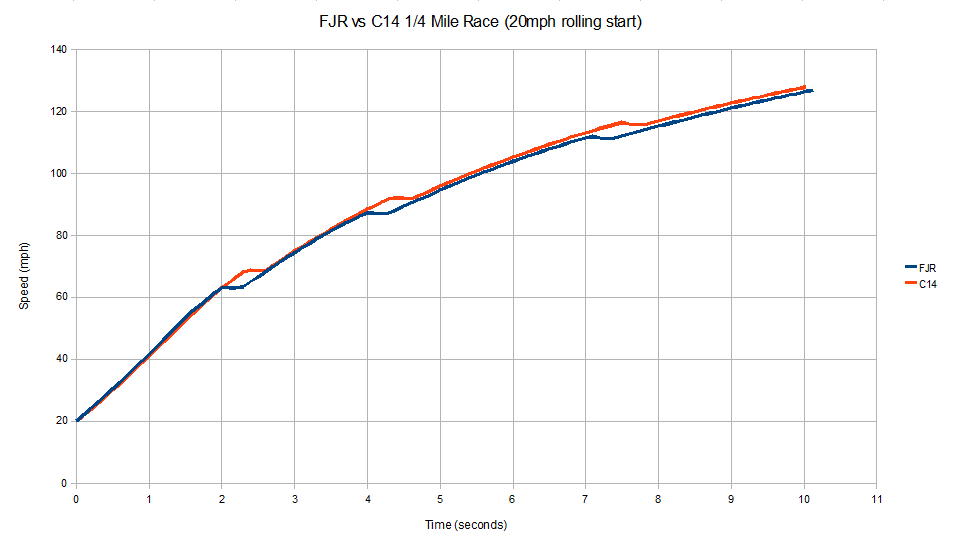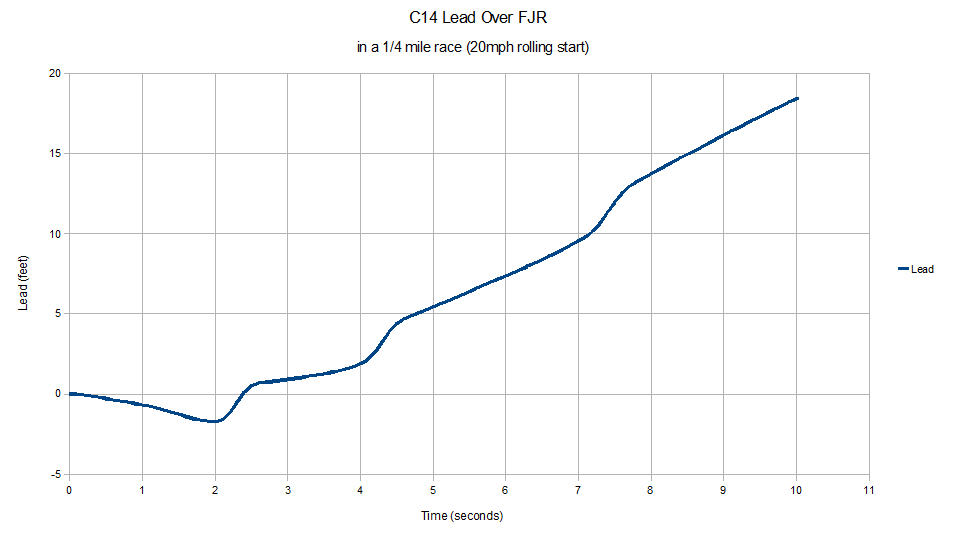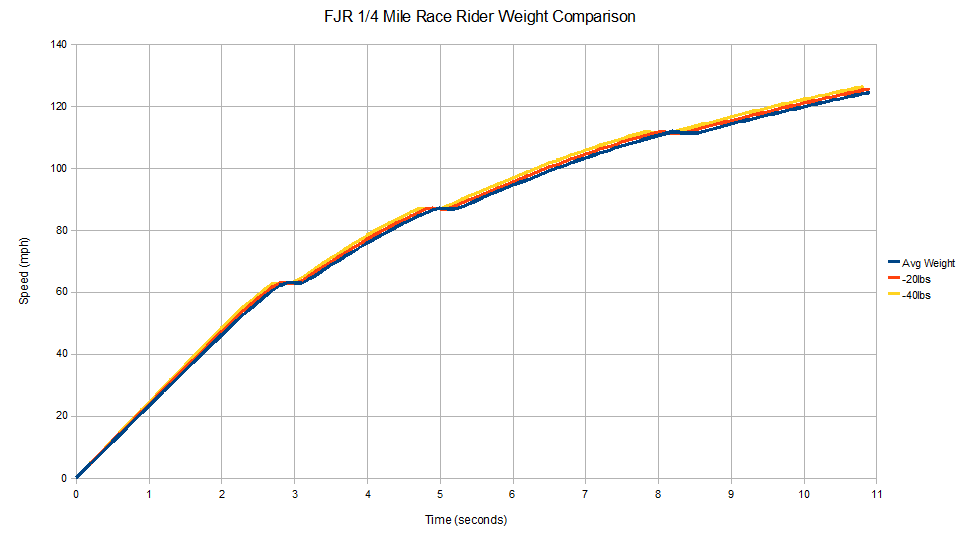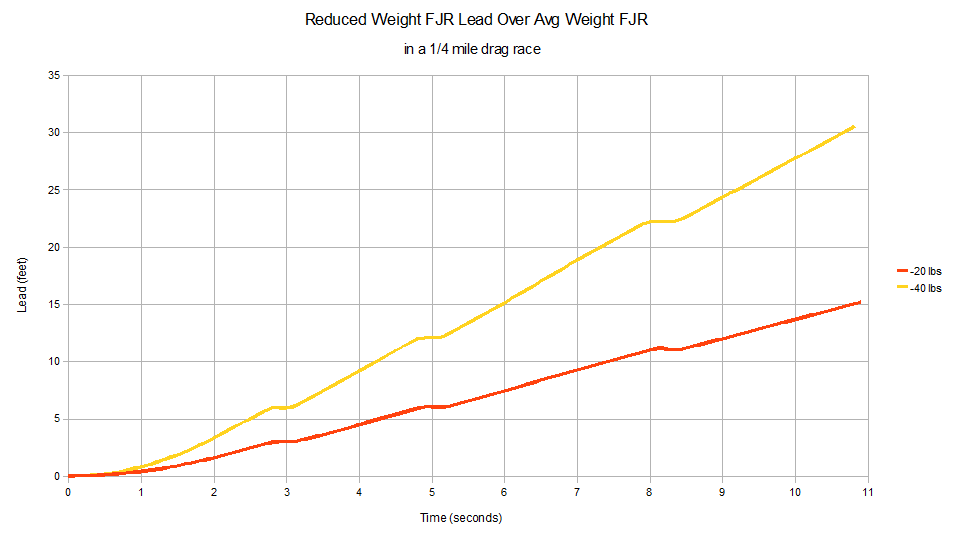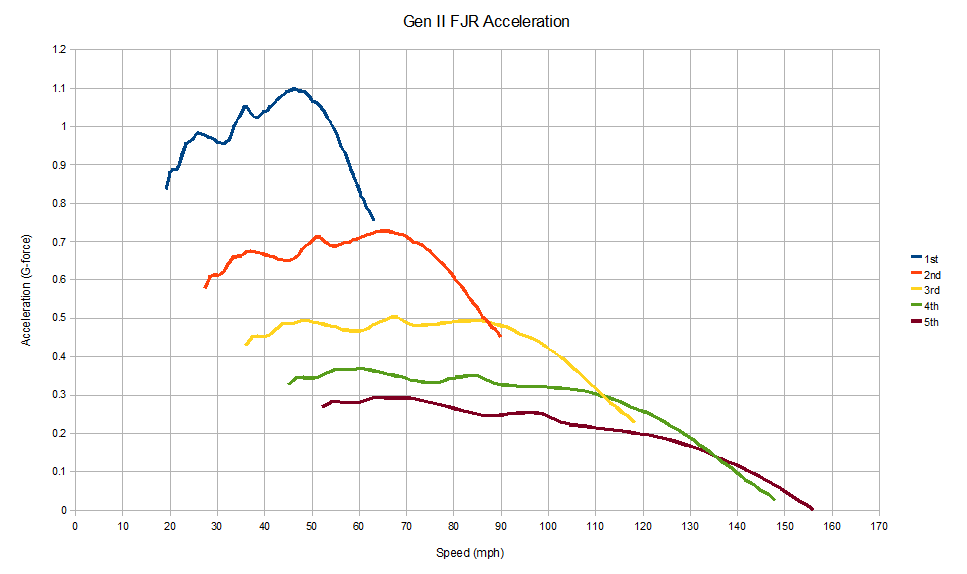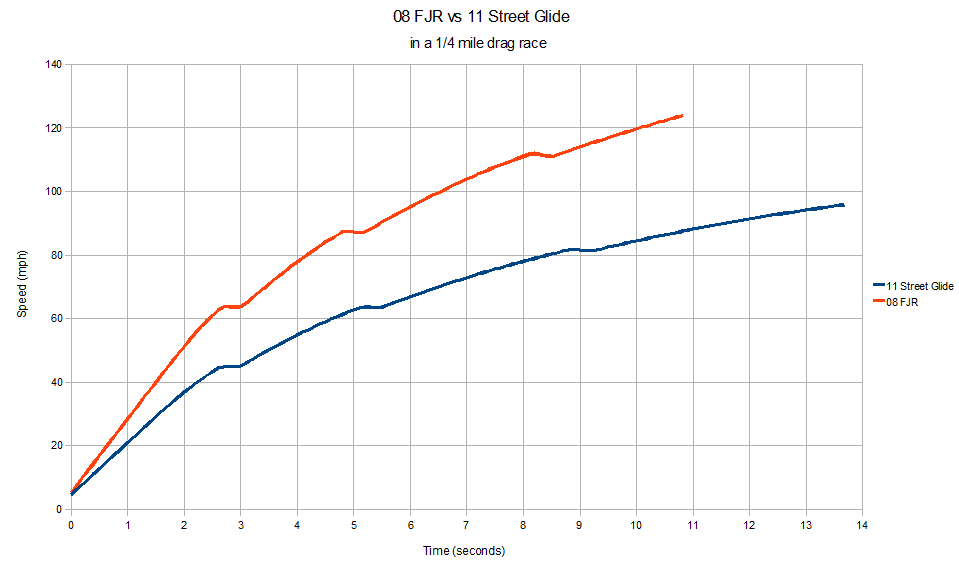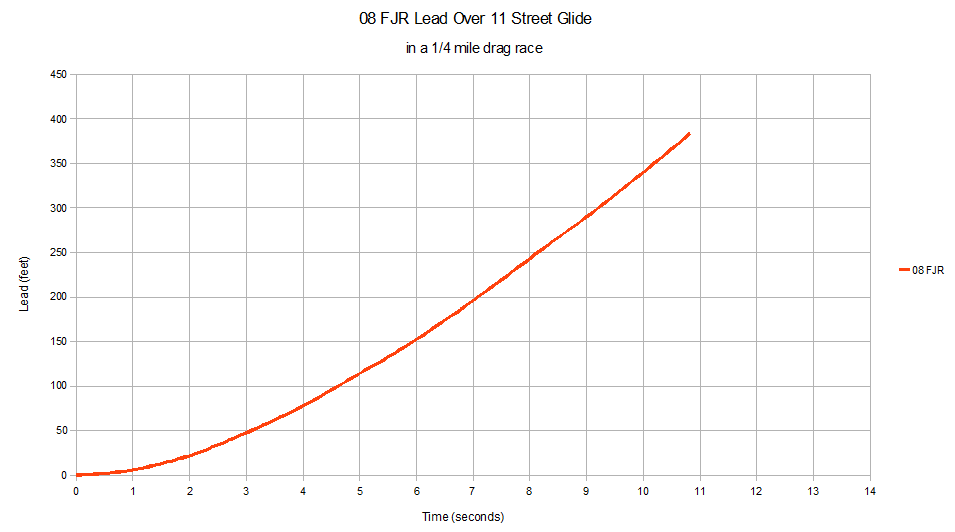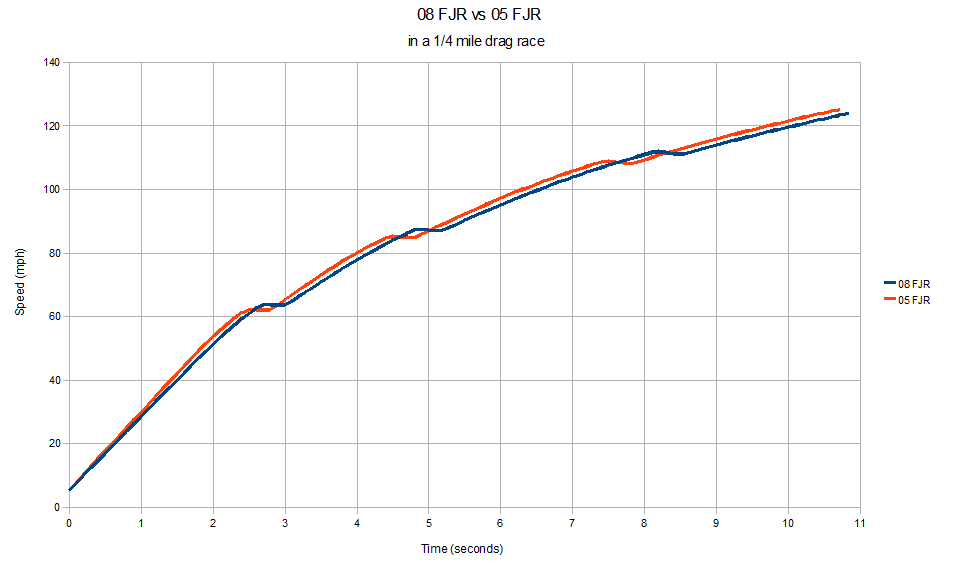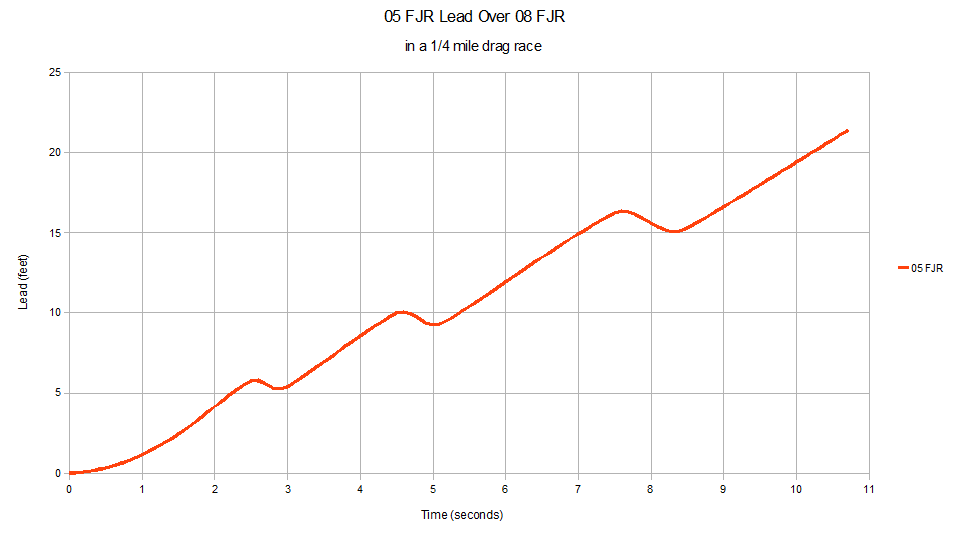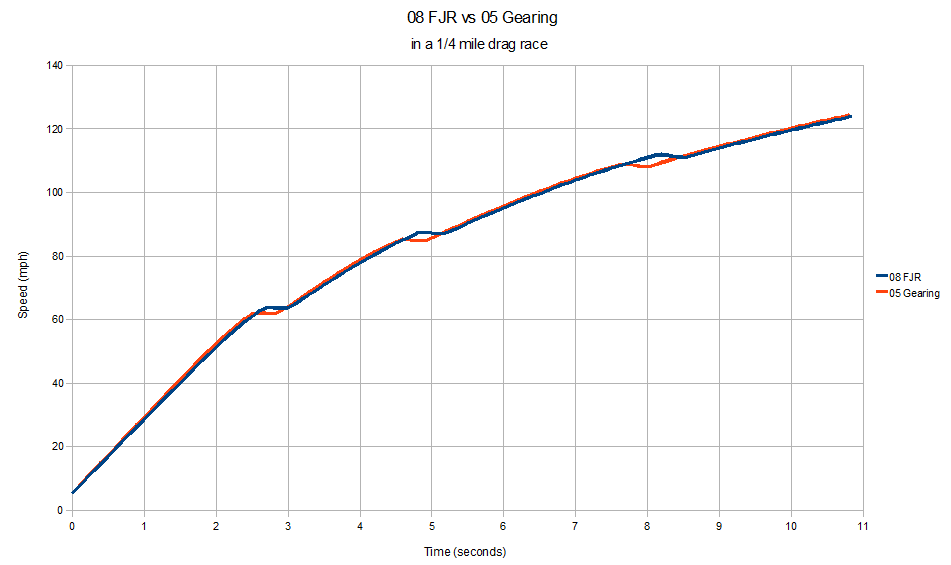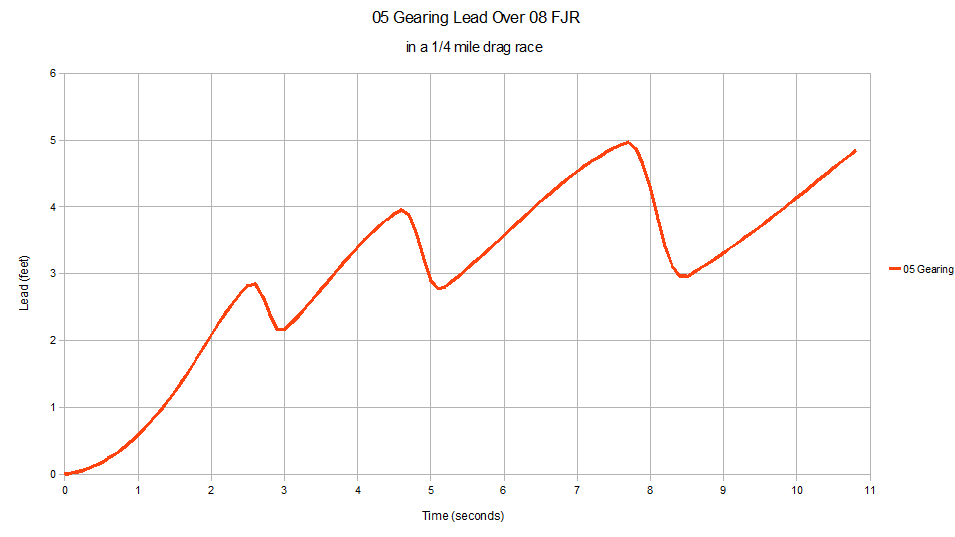I've made a few enhancements to my code to generate more plausible results...
First, I put a limit on the jerk (change in acceleration) during the launch. It's impossible for something to go from 0g to 1.1g acceleration instantly. Based on a data log from the drag strip, it looks like I hit 1g within 0.12 seconds, so that's what I'll go with.
Next, I found from my data logs that my clutchless shifts actually take about 0.32s, rather than the 0.25s I was using. That's been updated.
Finally, and probably most importantly for 1/4 mile times, I implemented allowing a roll-out distance before the timer and distance counting starts. When you stage up at the starting line at the drag strip, you move forward until the staging light turns on (your tire breaks a beam that is about 1-2 inches off the ground. The timer doesn't start until your tire moves out of the beam. About 11 inches of roll-out seems reasonable based on measuring the length of my front tire about 2 inches off the ground.
Using my new tweaks, here's the FJR vs Harley Street Glide results. Both riders are average weight (190lbs + 14lbs of gear), and both riders launch at peak torque RPMs.
08 FJR: 10.84s @ 123.94mph
Street Glide: 13.68s @ 95.8mph
Now for some Gen I vs Gen II action!
08 FJR: 10.84s @ 123.94mph
05 FJR: 10.72s @ 125.23mph
And finally, a Gen II FJR vs a hypothetical hybrid with the weight of a Gen II, but the gearing of a Gen I.
08 FJR: 10.84s @ 123.94mph
05 Gearing: 10.81s @ 124.38mph
As you can see, the gearing difference alone doesn't have a huge impact. The lower gearing alone only yielded a 5 foot lead at the end, while the lower gearing AND lower weight yielded a 22 foot lead.
All these numbers are still coming up quite optimistic, but that's probably partly due to me simulating an absolutely perfect launch. It makes me wonder if the magazine testers launch the bikes at the peak torque RPM, or if they launch at a more "gentle" RPM. I also wonder when they shift. It's possible that they might subscribe the the "shift just after peak HP" theory, and they end up short-shifting a bit. With my recent changes for more "realistic" results, I decided to try out an 08 FJR launching at 4000 RPM and shifting at 8400 RPMs. The result was 11.12s @ 123.8mph. MCN's reported time on a Gen II FJR is 11.12s @ 119.60mph.
I'm finding that there's so many variables (weight of rider, launch RPM, shift points, shift quickness, how deep into the starting beam did the rider stage) that can dramatically affect the results. None of this is standardized (or even disclosed) in tests of different bikes by the magazines, so is there really even any point to comparing performance numbers from different similarly-performing bikes in the magazines? This just seems to make what I'm working on even more meaningful. If I could get dyno data for multiple bikes from the same dyno, with SAE correction applied, then I could provide standardized simulated comparisons that take all those unknowns away. The results themselves might nit be accurate representations of real life, but at least the
differences in results between any 2 bikes would be representative of real life differences in potential performance.




